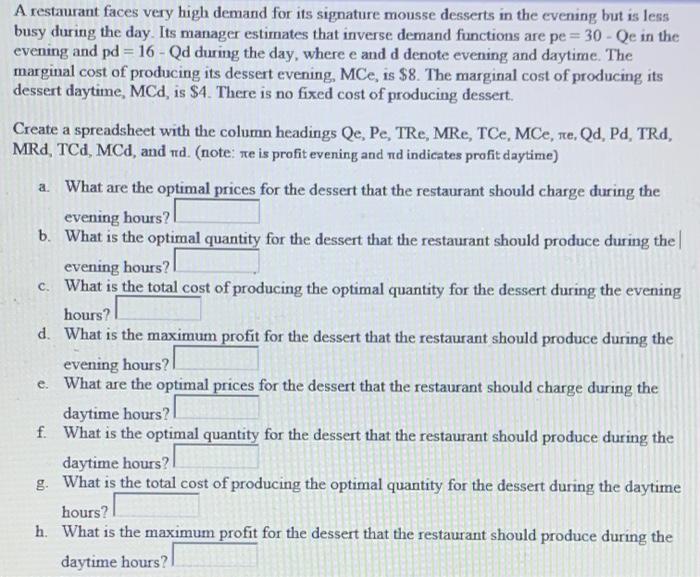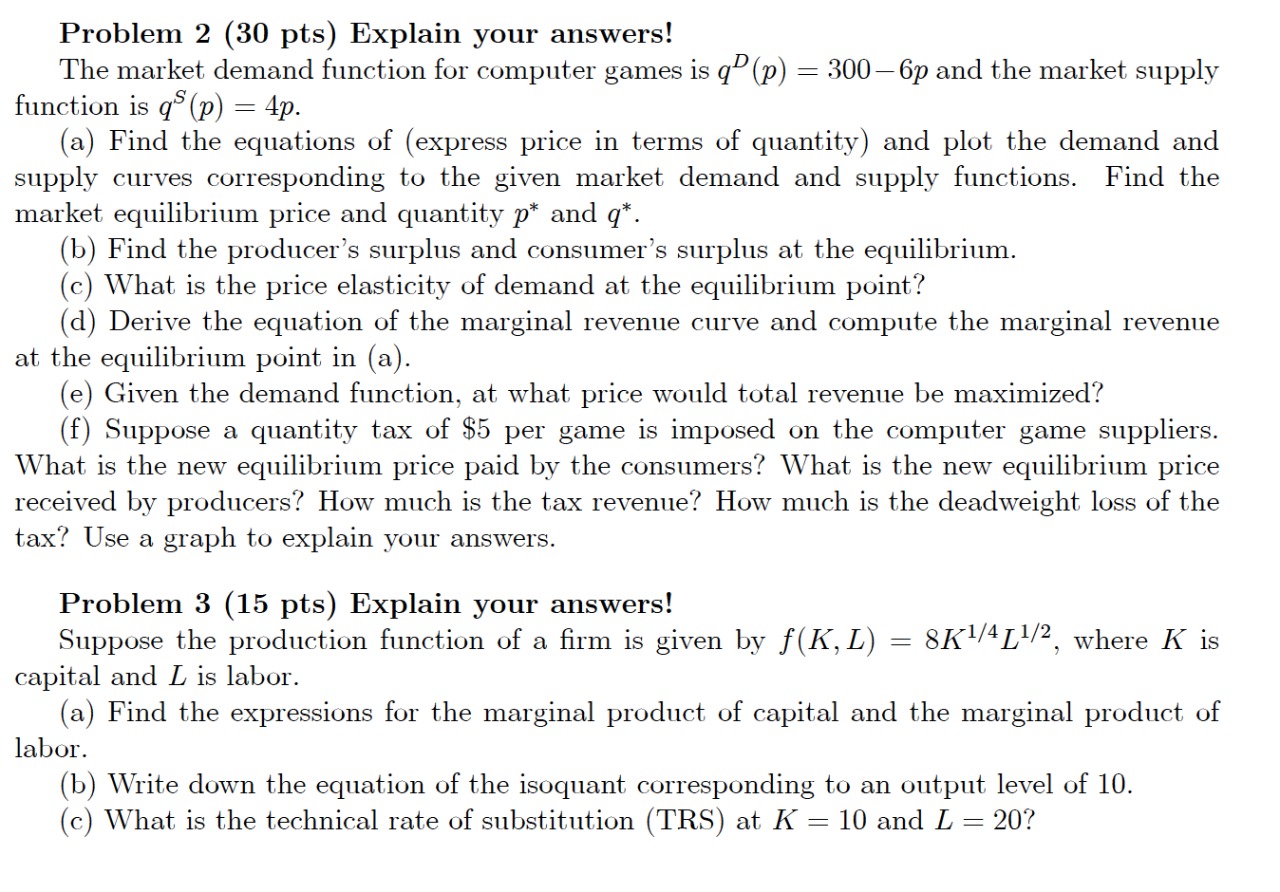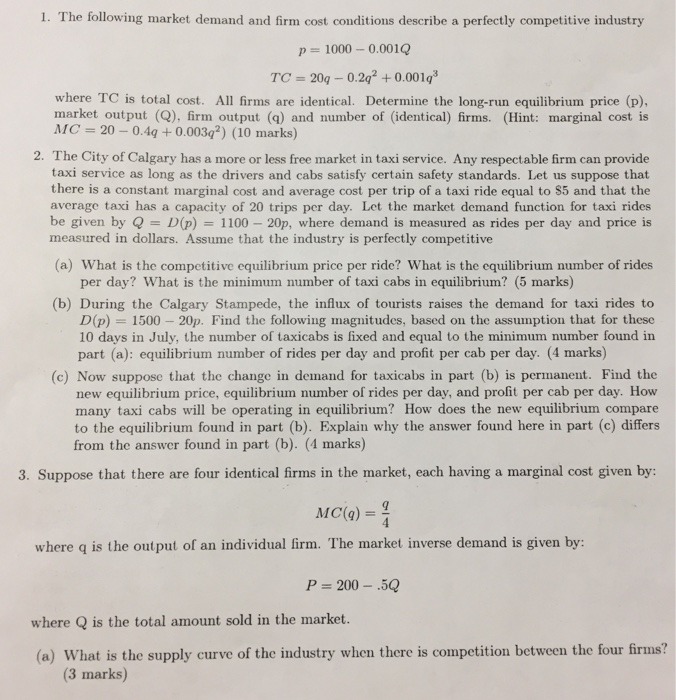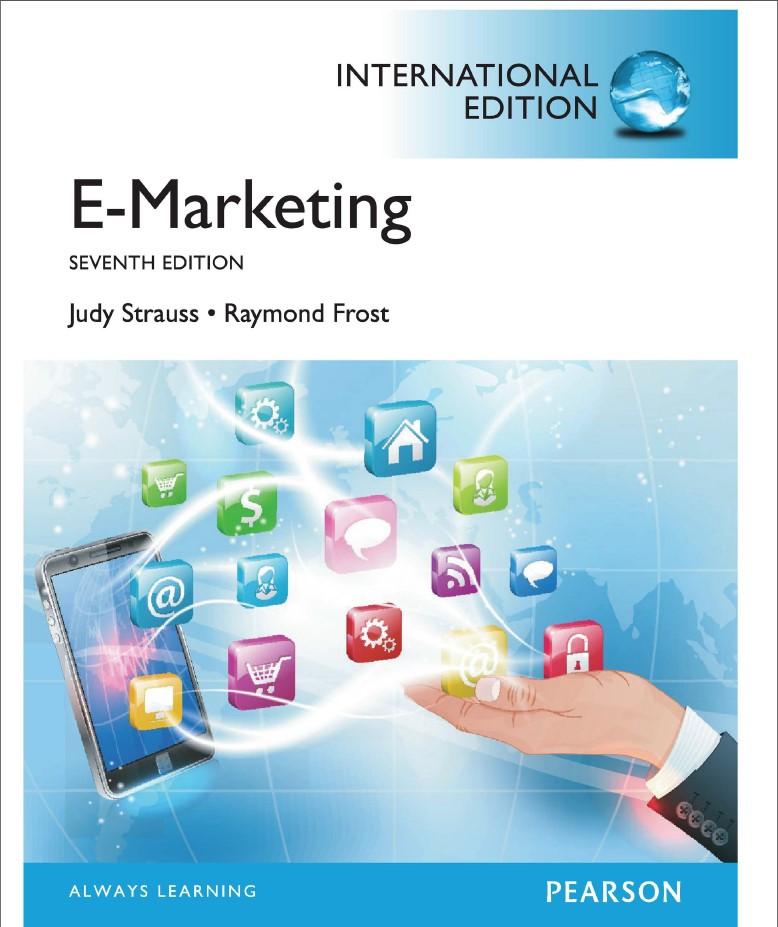


Solve the following .
A restaurant faces very high demand for its signature mousse desserts in the evening but is less busy during the day. Its manager estimates that inverse demand functions are pe = 30 - Qe in the evening and pd = 16 -Qd during the day, where e and d denote evening and daytime. The marginal cost of producing its dessert evening, MCe, is $8. The marginal cost of producing its dessert daytime, MCd, is $4. There is no fixed cost of producing dessert. Create a spreadsheet with the column headings Qe, Pe, TRe, MRe, TCe, MCe, ne, Qd, Pd, TRd, MRd, TCd, MCd, and nd. (note: ne is profit evening and nd indicates profit daytime) a. What are the optimal prices for the dessert that the restaurant should charge during the evening hours? b. What is the optimal quantity for the dessert that the restaurant should produce during the evening hours? c. What is the total cost of producing the optimal quantity for the dessert during the evening hours? d. What is the maximum profit for the dessert that the restaurant should produce during the evening hours? e. What are the optimal prices for the dessert that the restaurant should charge during the daytime hours? f. What is the optimal quantity for the dessert that the restaurant should produce during the daytime hours? I g. What is the total cost of producing the optimal quantity for the dessert during the daytime hours? h. What is the maximum profit for the dessert that the restaurant should produce during the daytime hours?Problem 2 (30 pts) Explain your answers! The market demand function for computer games is qD (p) = BOOSp and the market supply function is qs(p) = 4}). (a) Find the equations of (express price in terms of quantity) and plot the demand and supply curves corresponding to the given market demand and supply functions. Find the market equilibrium price and quantity p* and if". (b) Find the producer's surplus and consumer's surplus at the equilibrium. (c) What is the price elasticity of demand at the equilibrium point? ((1) Derive the equation of the marginal revenue curve and compute the marginal revenue at the equilibrium point in (a). (e) Given the demand function, at what price would total revenue be maximized? (f) Suppose a quantity tax of $5 per game is imposed on the computer game suppliers. What is the new equilibrium price paid by the consumers? What is the new equilibrium price received by producers? How much is the tax revenue? How much is the deadweight loss of the tax? Use a graph to explain your answers. Problem 3 (15 pts) Explain your answers! Suppose the production function of a rm is given by f (K ,L) = SK 1/4111\1. The following market demand and firm cost conditions describe a perfectly competitive industry p = 1000 - 0.001Q TO = 20q - 0.2q2 + 0.001q where TC is total cost. All firms are identical. Determine the long-run equilibrium price (p), market output (Q), firm output (q) and number of (identical) firms. (Hint: marginal cost is MC = 20 - 0.4g + 0.003q?) (10 marks) 2. The City of Calgary has a more or less free market in taxi service. Any respectable firm can provide taxi service as long as the drivers and cabs satisfy certain safety standards. Let us suppose that there is a constant marginal cost and average cost per trip of a taxi ride equal to $5 and that the average taxi has a capacity of 20 trips per day. Let the market demand function for taxi rides be given by Q = D(p) = 1100 - 20p, where demand is measured as rides per day and price is measured in dollars. Assume that the industry is perfectly competitive (a) What is the competitive equilibrium price per ride? What is the equilibrium number of rides per day? What is the minimum number of taxi cabs in equilibrium? (5 marks) (b) During the Calgary Stampede, the influx of tourists raises the demand for taxi rides to D(p) = 1500 - 20p. Find the following magnitudes, based on the assumption that for these 10 days in July, the number of taxicabs is fixed and equal to the minimum number found in part (a): equilibrium number of rides per day and profit per cab per day. (4 marks) (c) Now suppose that the change in demand for taxicabs in part (b) is permanent. Find the new equilibrium price, equilibrium number of rides per day, and profit per cab per day. How many taxi cabs will be operating in equilibrium? How does the new equilibrium compare to the equilibrium found in part (b). Explain why the answer found here in part (c) differs from the answer found in part (b). (4 marks) 3. Suppose that there are four identical firms in the market, each having a marginal cost given by: MC(q) = where q is the output of an individual firm. The market inverse demand is given by: P = 200 - .5Q where Q is the total amount sold in the market. (a) What is the supply curve of the industry when there is competition between the four firms












